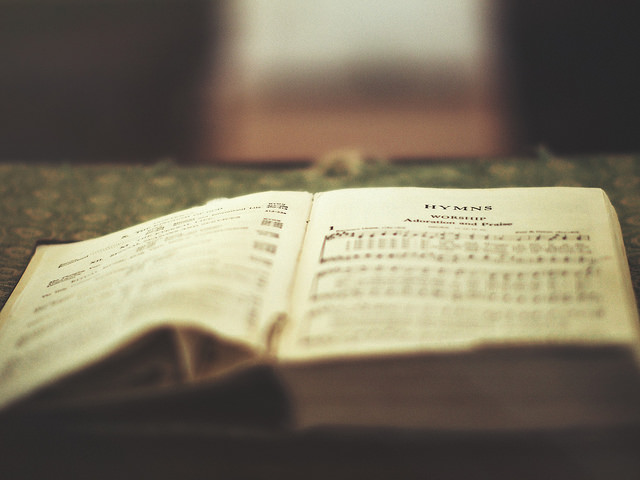
It has been said, but I am not sure by whom, that there are two things that bring people to a church, preaching and music. It has also been said, probably by the same people, that there are two things that keep people in church, preaching, and music. Now, with that said, that I believe the adjective dynamic needs to be inserted before preaching and before music.
People are hungry, and they are looking for food, not fast food, but slow cooked food that they can sit with and think about and work on to change their lives. Sure there are also people who want to hear sermons about how good they are and all of the beautiful things they are doing. They do not wish to change anything about their lives, and they do not want to be challenged. There are churches for those folks as well, but not any church I preach in.
The church I am presently service, I am an intentional interim minister in the United Church of Christ, uses a hymnal called the Pilgrim Hymnal. It is an older hymnal that has been around for a very long time. As one would expect, this hymnal is gender neutral and includes many of the old-time favorites that most of us grew up with. Some do not like this hymnal, but I like it. Sure, the language could be different and more inclusive, but I love this particular hymnal for its rich theological content. Yes, there is theological content in hymns, well the old hymns anyway.
As the church faces the modern world, there is a push on for the latest thing, whatever that might be, and this includes music. Many churches have thrown away the hymnal, and they now project the words on a screen or a wall in the sanctuary. I am not against this sort of thing, but I am against the low theological content of the “modern” hymns or instead church music.
Over on the Break Point Blog, there is a discussion about dumping the hymnal for the projector and screen. Here is a taste of the article:
On his website, Toronto blogger Tim Challies notes that only a few decades ago, nearly every church had a goodly supply of hymnals; they were the best way to provide each worshiper with copies of all the songs they were to sing on a given Sunday. But today, many churches project the words of songs up on a screen—not just hymns, but songs of all types.
What’s lost, Challies writes, is the sense that the church “had an established collection of songs”– something well-worn hymnals suggested. Hymnals also communicated the idea that each song, before its inclusion, had been carefully vetted regarding its quality and its message. “After all,” Challies writes, “great songs are not written every day, and their worth is proven only over time .”
This meant new hymns were “chosen carefully and added to new editions of the hymnal only occasionally”–about every ten or fifteen years, Challis writes.
Not so today. Now, congregations are asked to sing all sorts of newly-written songs, many of which, to put it charitably, are not likely to stand up to the test of time. Some songs are composed by enthusiastic musicians who often have little understanding of the theological messages hymns ought to convey.
The loss—or downgrading–of traditional hymns means we now have the ability to add new songs to the service willy-nilly. The result: We “have far fewer of [the great hymns of the faith] fixed in our minds and hearts,” Challies observes.
Read the rest here
Although I serve in a denomination that is usually ahead of the curve on many social issues, I am a traditionalist when it comes to worship. I do, however, believe that there is room for all sorts of expression in worship, but the wholesale casting off of the old just because it is old, is not always the best way.
